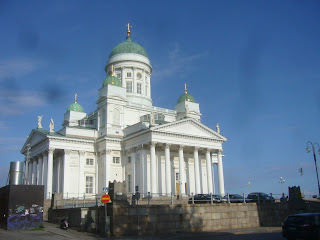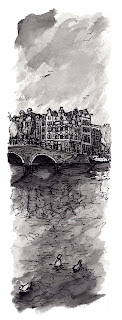

















Brussels, Belgium
Population of City Proper: 1,080,790
Population of Metro Area: 2,676,701
Year Founded: 979
Brussels to me is really interesting because in terms of over all population it is very similar to Cincinnati’s, however its distribution make it a much more vibrant and livable city. Both cities metro areas are roughly 2.5 million, but Brussels has around 1 million in it’s city proper where as Cincinnati only has around 365,000. Because of this Brussels is a city with vibrant night life, an extensive public transit system, and enough stores and shops to rival any city.
Brussels does though have 2 things going for it that will make it viable for the forseeable future and that is that it is not only the capital of Belgium, but also the capital of the entire European Union. In fact an entire quarter of the city, ingeniously named the Europen quarter, has been built new with all of the government buildings to run the young European union. This part of town is pretty awful though by all standards. New faceless glass louvered buildings line streets and make no gesture to the public front. The government complexes feel more like a corporation than a union.
Fortunately though Brussels has been blessed with and amazing old city, full of ornate stone and brick buildings which form a tight nit maze of pedestrian only streets. The main square is spectacular and surrounded by some of the most beautiful buildings I have seen in any city thus far. Brussels is also perhaps one of the most heavily influenced cities by the Art Nouveau style of the 1890’s. Victor Horta did a number of works in the city and many of the cities surrounding neighborhoods have beautiful wrought iron balconies, doors, and stained glass windows in the art nouveau style.
Brussels is the first city I have visited in Europe to have a traditional high rise skyscrapers in its business district. Paris and London both had some but they were far away and much more separate. Though they are still very separate in Brussels, it is impossible to not see them from any point in the city. While there is plenty of old world charm, the fact that the new world exists is by no means hidden in this city as it was in London and Paris.
One interesting thing about the city is that while there is an extensive subway and tram system, they absolutely never check to see if you paid to use it. In fact most stations didn’t even have ticket booths, and only a few even had any markings to let you know you are supposed to pay. I only saw 2 stations with turnstiles, but all of the spokes were sawed off so you could go through. It is almost like they don’t want you to pay. But whatever, there loss I suppose.
In the end though, while Brussels doesn’t have to attractions of other European cities, I think it probably functions better than most of them. The city is monumental like Paris, but not as hectic. I think most anyone would like Brussels, in fact it is one of my favorites so far, but it is not unique in the same way as some of these other cities. But you should still go, eat some waffles.






























































